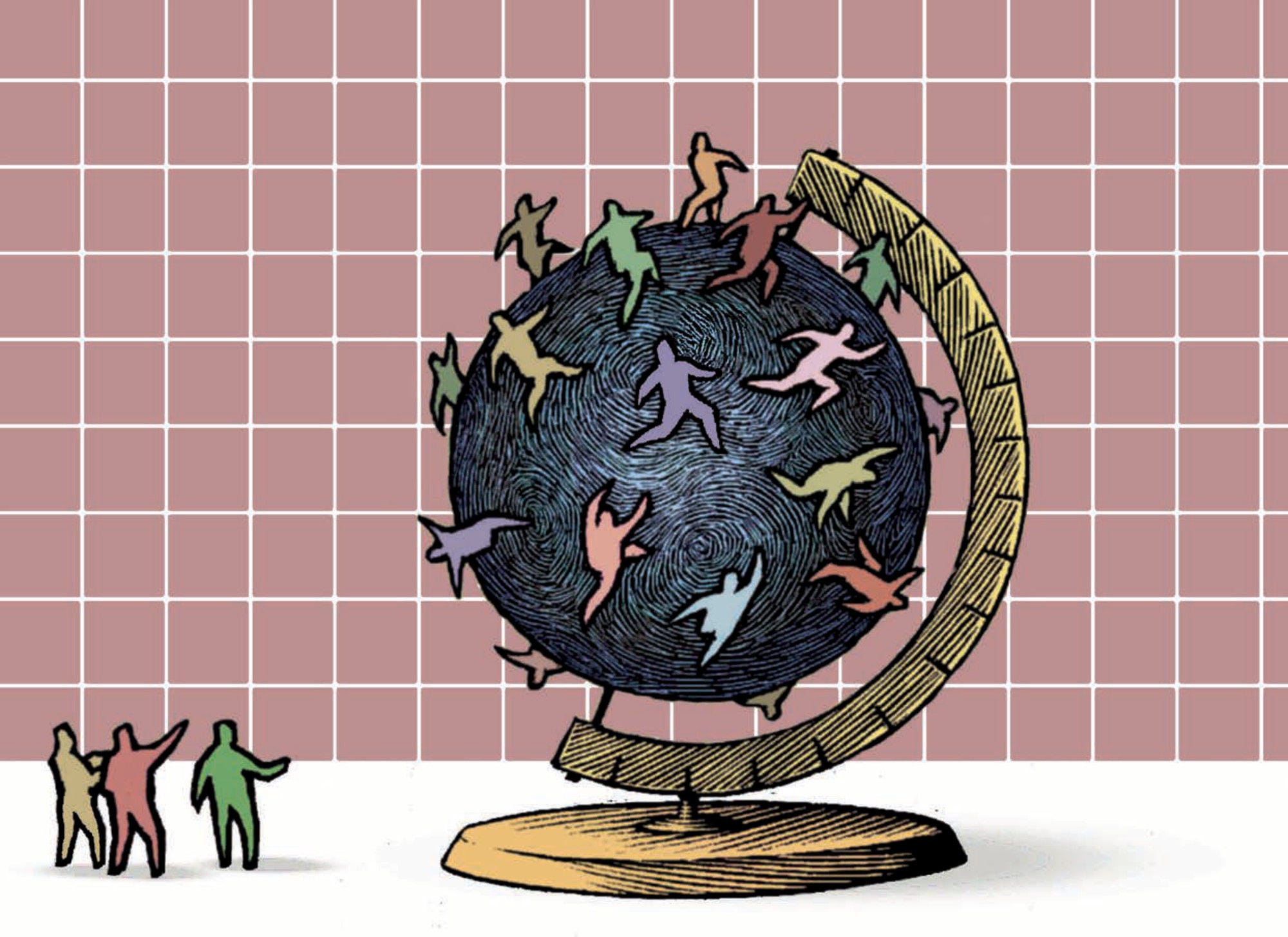In 2017, Switzerland received 118 000 new immigrants on a long-term or permanent basis (including changes of status and free mobility), ‑5.3% compared to 2016. This figure comprises 72.6% immigrants benefitting from free mobility, 1.6% labour migrants, 17.4% family members (including accompanying family) and 5.8% humanitarian migrants.
Around 11 000 permits were issued to tertiary-level international students and 74 400 to temporary and seasonal labour migrants and trainees. In addition, 105 700 EU postings were recorded in 2017, an increase of 1.3% compared to 2016. These posted workers were generally on short-term contracts.
Germany, Italy and France were the top three nationalities of newcomers in 2017. Among the top 15 countries of origin, Eritrea registered the strongest increase (300) and Italy the largest decrease (‑2 700) in flows to Switzerland compared to the previous year.
In 2018, the number of first asylum applicants decreased by 18.8%, to reach around 14 000. The largest groups of applicants come from Eritrea (2 500), Syria (1 200) and Afghanistan (1 100). The largest increase since 2017 concerned nationals of Algeria (200) and the largest decrease nationals of Eritrea (‑700). Of the 17 000 decisions taken in 2018, 89.4% were positive.
Emigration of Swiss nationals to OECD countries increased by 3.7% to 11 000. Approximately two in five (39.9%) migrated to Germany, 14.1% to Spain and 6.8% to Austria.
A number of recent policy changes concerned integration. Switzerland launched its Integration Agenda in 2018. As part of the cantonal integration programmes, it defines a nationwide integration process for refugees and provisionally admitted persons which includes: provision of initial information, continuous case management, clarification of potential and measures for linguistic and professional integration, and the setting of five impact targets. By May 2019, the Federal Council (Government) will triple the contribution to the Cantons for their integration policies from CHF 66 to 200 million annually (from CHF 6 000 to CHF 18 000 per person).
Switzerland also initiated a new federal programme of “pre-vocational training” for refugees and provisionally admitted persons for a total of up to 3 600 individuals during the four-year duration of the programme. By mid‑2018, agreements with 18 Cantons had been concluded and the first pre-vocational-training started in August 2018.
In August 2018, the Swiss Federal Council approved a set of changes on integration and language requirements (concerning the primary language of the place of residence) for foreign nationals seeking a residence permit.
On 15 February 2018, the new citizenship act entered into force which makes naturalisation easier for young foreigners (between 9 and 25 years of age) of the third generation, i.e. individuals whose families have lived in Switzerland for generations. The act allows well-integrated foreigners to apply for citizenship in a simplified procedure.
On 1 January 2019, the previous federal foreigners’ act was renamed the "Federal Act on Foreigners and Integration". Among the changes came easier access to the labour market for refugees and those provisionally admitted. They can now take up employment after a simple notification to the labour market authorities. A further measure concerns the possibility of linking the granting of a residence permit to signature of an integration agreement. This integration agreement is binding and non-fulfilment on the side of the migrant may be sanctioned (a downgrade of permit).
On 1 March 2019, new accelerated asylum procedures and claim to free legal protection were introduced throughout Switzerland. The majority of the proceedings will take place in the asylum centres of the federal government and asylum procedure will last for a maximum of 140 days.
At its meeting on 18 April 2018, the Federal Council decided to restrict free mobility for workers from Bulgaria and Romania for a further year. Later that year, Switzerland prolonged the transition period for free mobility with Croatia until the end of 2021.
In November 2018, the Federal Council assessed the first phase of the new integrated border management strategy that took place from 2014‑17. As a follow-up, it mandated the Federal Office for Migration to develop a new strategy, together with the Cantons, with a time horizon of up to 2027. This is again based on the key pillars of the previous strategy: combating illegal migration, people smuggling, cross-border crime and facilitating legitimate entry. The new strategy includes cooperation with Schengen member states and third countries, use of modern technologies, risk analyses, quality control mechanisms and participation in international solidarity mechanisms.
For further information:
www.sem.admin.ch
